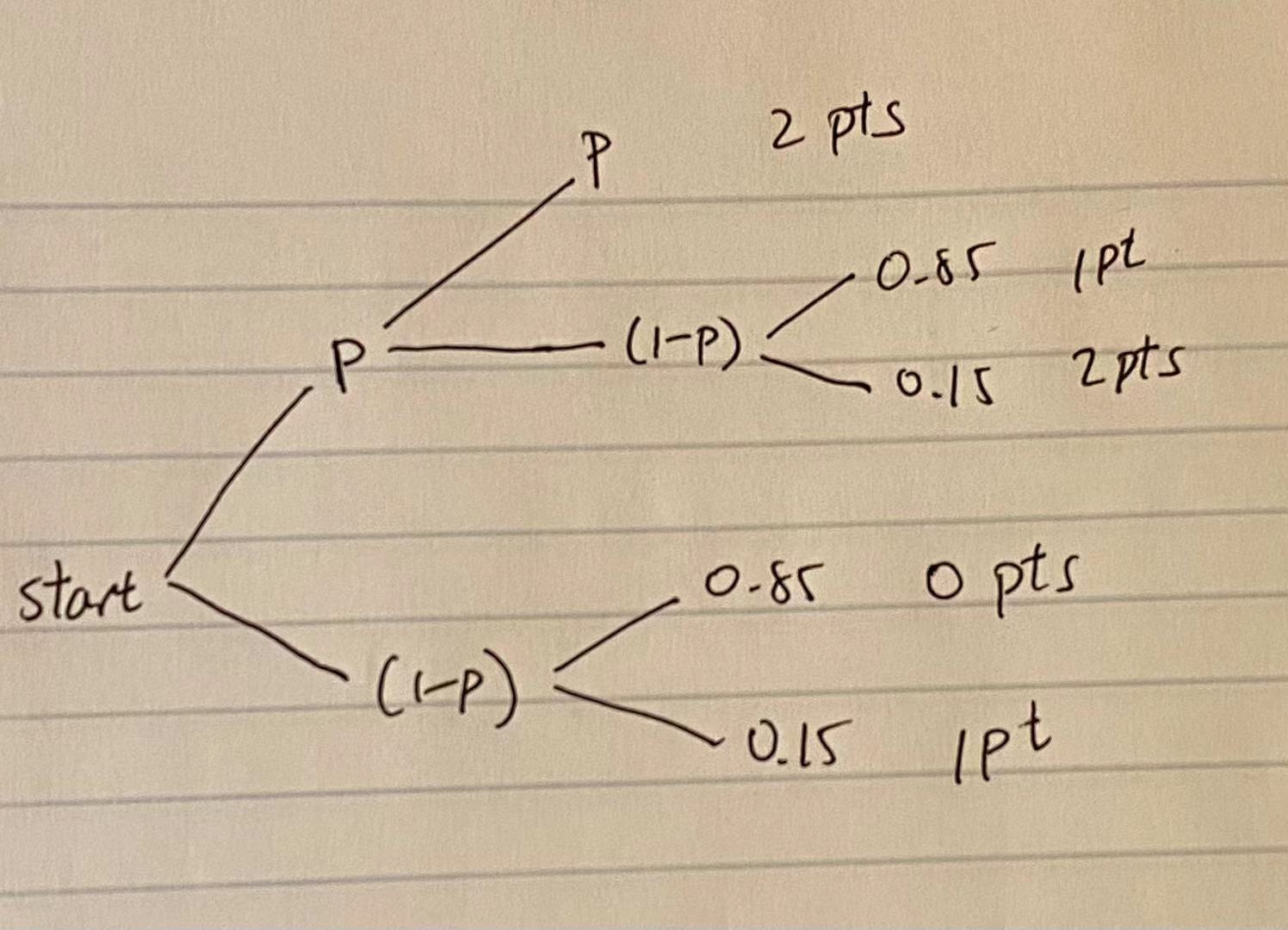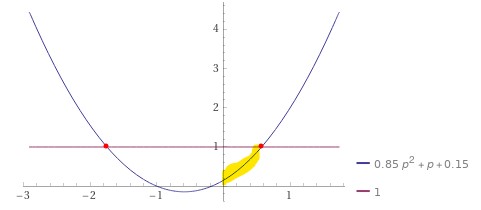



March 26, 2021
From Dave Moran comes a riddle so foul it’s sure to bust your bracket:
In NCAA men’s basketball, when a team has committed between six and eight fouls in a half, the opposing team is “in the bonus.” This means that the next time they are fouled while not in the act of shooting, they get to shoot at least one free throw. If the player makes that first free throw, they get to shoot a second. If either free throw is missed, one team will rebound the ball, and play will continue with the rebounding team in possession.
Assume that an average team scores exactly 1 point per offensive possession, a figure that accounts for multiple shots if the team rebounds its own miss (or misses) on a single trip, and that it rebounds 15 percent of its own missed free throws.
Now suppose you are the coach of a team playing an average opponent that’s in the bonus. The other team has the ball, the game is tight, and you want to minimize the expected number of points your opponent will earn on this particular possession. How low does the ball-handler’s free throw shooting percentage need to be for you to instruct your team to foul that player (when they are not in the act of shooting)?
Answer: \(\frac{\sqrt{389} - 10}{17}\) exactly or approximately 57.2%
Well, what a great way to make up my utterly messed up NCAA March Madness bracket by doing a Riddler puzzle on #MarchMathness! Oh and winning last week's Riddler Classic was also nice :D.
My #MarchMadness bracket is already busted, so cue #MarchMathness 😅 #ThisWeeksRiddler. https://t.co/8D2uxFs6wQ
— David Ding (@DavidYiweiDing) March 26, 2021
Explanation:
Let's assume that by "How low does the ball-handler’s free throw shooting percentage need to be", the riddler wants to know the greatest free-throw probability, \(p\), such that the expected points coming out of that trip to the free-throw line (and what would ensue) results in an expected point in that let's-foul-an-opponent possession to be less than that without fouling, which is given to be 1 point on average.
From the given parameters in the question, the following stochastic chart illustrates the expected points for different scenarios, ranging from 0 to 2 points:

The explanation is as follows: if the player sinks the two free throws, then that's 2 points in the bag. If the player sinks the first free throw, but misses the second, then with a 0.15 chance the opponent team retains possession after grabbing the offensive board. This results in an expected additional point in the resulting play. Otherwise, our team gets the ball and only lets the opponent score 1 pt from the first free throw. A similar analysis can be performed should the opponent misses the first free throw.
Then we can write out the expression for the expected number of points scored should the opponent be fouled, in terms of \(p\), the opponent's free-throw probability.
\begin{align} E(p) &= 2[p^2 + 0.15p(1-p)] + 1[0.85p(1-p) + 0.15(1-p)] \\ &= 2p^2 + 0.3p - 0.3p^2 + 0.85p - 0.85p^2 + 0.15 - 0.15p \\ &= 0.85p^2 + p + 0.15 \end{align}
Now it gets interesting. The expected fouling strategy score is a quadratic function of \(p\), so let us graph it courtesy of Wolfram Alpha and also draw a reference line for 1, the expected score let up should we not foul.

Aha! So for this quadratic, the highlighted portions correspond to the free-throw probability that it would be worth it to foul the other player. From a glance in the chart we see that this region makes sure \(0 \leq p \leq 1\), so nothing funky is going on here.
For the highlighted curve, we know the lower bound on \(p\) is 0. Let's figure out the exact upper bound.
\begin{align} 0.85p^2 + p + 0.15 &= 1 \\ 85p^2 + 100p + 15 &= 100 \\ 17p^2 + 20p + 3 &= 20 \\ 17p^2 + 20p - 17 &= 0 \\ p = \frac{-20 \pm \sqrt{400 + 1156}}{34} \\ p = \frac{-10 \pm \sqrt{389}}{17} \end{align}
Of course, we had to make sure that \(0 \leq p \leq 1\), so only the positive solution is kept. Hence:
\begin{align} p &= \frac{-10 + \sqrt{389}}{17} \\ &= \boxed{\frac{\sqrt{389} - 10}{17}} \\ &\approx 0.572 \\ &\approx 57.2 \% \end{align}
Therefore, when the opponent to be fouled has a free-throw percentage of 57.2% or lower, it would be better to foul that player. Otherwise, play on!